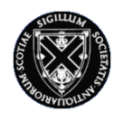Scottish Archaeological Internet Reports (SAIR)
Society of Antiquaries of Scotland, 2012. (updated 2023) https://doi.org/10.5284/1017938. How to cite using this DOI
Data copyright © Society of Antiquaries of Scotland unless otherwise stated
This work is licensed under the ADS Terms of Use and Access.
Primary contact
Society of Antiquaries of Scotland
National Museums Scotland
Chambers Street
Edinburgh
EH1 1JF
Scotland
Resource identifiers
- ADS Collection: 310
- DOI:https://doi.org/10.5284/1017938
- How to cite using this DOI
Camas Daraich: a Mesolithic site at the Point of Sleat, Skye
Wickham-Jones, Caroline R and Karen Hardy
with contributions by Ann Clarke, Michael Cressey, Kevin J Edwards and Anthony Newton
Scottish Archaeological Internet Reports 12 (2004)
0903903822
Abstract: The archaeological site of Camas Daraich (on the peninsula of the Point of Sleat, in south-west Skye) was revealed in November 1999 when stone tools were discovered in the upcast from a newly bulldozed track. Excavation took place in May 2000, directed by the authors and under the auspices of Historic Scotland, the Centre for Field Archaeology and the Department of Archaeology, University of Edinburgh. The excavations were small-scale and brief, but they demonstrated the survival of stratified features (scoops and a possible hearth) as well as an assemblage of nearly 5000 flaked lithics, comprising both tools and debris. There was no organic preservation, with the exception of burnt hazelnut shell. The composition of the lithic assemblage suggested that the excavated site was Mesolithic and this was confirmed by the radiocarbon determinations, which place it securely in the mid 7th millennium BC. Surface material suggested that there was evidence for more recent prehistoric (stone-tool-using) activity in the vicinity. Although the archaeological work at Camas Daraich was limited, the site is interesting for several reasons. First, it is one of a growing number of sites in the area with early dates for human settlement (until the mid 1980s dated Mesolithic evidence was lacking in the north of Scotland). Second, the lithic raw materials in use at Camas Daraich connect it firmly to a wider network of sites and provide conclusive evidence for human mobility. Third, further Mesolithic material is likely to survive at Camas Daraich so that the future well-being of the site is an important issue. Fourth, though there was no organic preservation, used pumice was recovered and this is rare on Mesolithic sites. Fifth, the lithics include both narrow-blade tools and conventionally broader/larger pieces and the relationship between these two traditions is still poorly understood in Scottish archaeology. Camas Daraich suggests that they may not be as clearly separated as previously thought.
Download report
| Scottish Archaeological Internet Report 12 | 8 Mb |
Supplementary data
Documentation
| Entity relationship diagram | 78 Kb | |
| Database Metadata | 188 Kb |
| CD Lithic Catalogue | CSV | 265 Kb |
| Classification | CSV | 1 Kb |
| Condition | CSV | 1 Kb |
| Material | CSV | 1 Kb |
| Sub type | CSV | 1 Kb |
| Type | CSV | 1 Kb |







